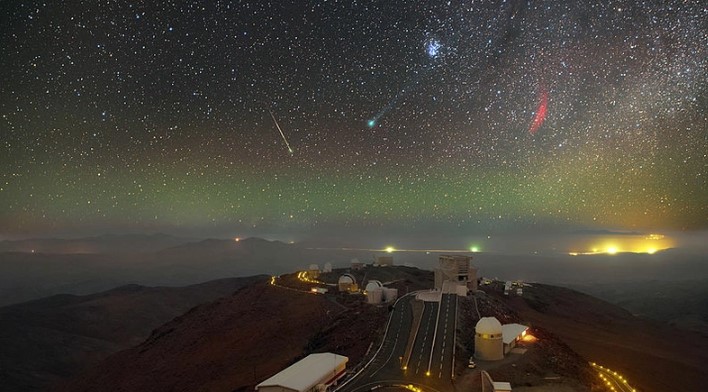Signals from another galaxy? It is not yet known with certainty what are these radio bursts that Canadian astronomers detected, but what is known is that they are extremely rare space phenomena.
2007 was the year in which a series of rapid bursts of radio were detected for the first time, coming from such a distant place on planet Earth that their origin is still unknown. Twelve years later, the gusts reappeared, increasing the mystery of their origin.
The Canadian Hydrogen Intensity Mapping Experiment, located at the Radio Astrophysical Observatory in British Columbia, Canada, detected a group of 13 new radio bursts originating in outer space. These are characterized by having a duration of thousandths of seconds.
Within this group, there is a radio burst that was quickly recognized as being equal to one of the bursts received in 2007, which could provide an indication of where they come from if the components of the bursts do not change.
Scientists believe that the low frequency of these bursts is directly related to the place where they occur. It could be a dense and turbulent place, such as supernovae or black holes.
In addition to the frequency of newly detected bursts that may indicate that they occurred at about 1.5 billion light-years, these approaches are only studies based on the bursts detected in 2007 and the current ones.
The researchers hope to detect more bursts to be able to locate the galaxy from which they come and compare the frequency with which the radio bursts approach Earth. They can also determine whether those that are repeated with those that are different have any link.
Burst analysis could be a great discovery, as it would allow knowing the possible components of galaxies far from Earth. That is, knowing what types of gases, dust, elements, etc., are found in other parts of the universe.
For now, astronomers remain anxious to receive more signals like these to discover if they are about to know the composition of the Milky Way, a supernova, a black hole or any other spatial phenomenon. What is your theory?
